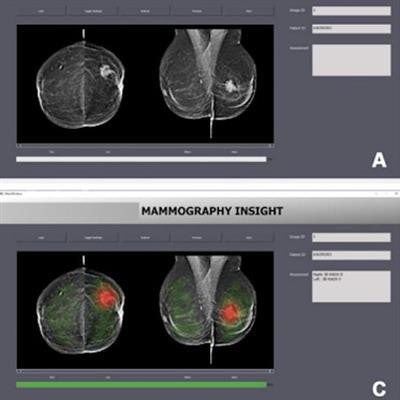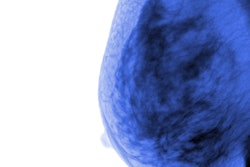
"Hindsight bias" -- that is, overestimating one's ability to predict a particular outcome -- affects mammography exam interpretation, but this effect may be positive, according to a study published on 17 May in the Journal of Medical Imaging.
In particular, visual hindsight bias can affect mammography exam reads, noted a team led by doctoral candidate Hayden Schill of the University of California, San Diego. The phenomenon is "a type of bias where prior knowledge about an image improves [one's] perception of it ... [and] gives the impression that the improved perception comes from visual cues alone and has little to do with prior information," the group wrote.
Visual hindsight bias is a particular problem for radiologists, and may open them to legal consequences, study sponsor SPIE, the International Society for Optics and Photonics, said in a statement.
"In fact, mammogram radiologists have been sued in the past for missing a tumor in the early-stage images of cancer," the society said. "In contrast, a radiologist may also claim that they can indeed see the tumor, a claim just as much subject to visual hindsight bias. As such events are common among radiologists, visual hindsight bias could entail serious legal consequences for them."
Schill's group recruited 34 radiologists and exposed them to multiple series of mammograms that included abnormalities using a method called repeated imaging with single evaluation, or RISE. (This technique presents subjects with images that repeat in an unpredictable order with varying levels of noise, ensuring that any biases are visual rather than cognitive.) In some of the image sets, the mammograms were blurry and became clearer as the study continued; in others, the exams were clear and became blurrier. Readers were prompted to decide whether the abnormality in the image was a mass or a calcification and to rank their confidence in this categorization.
The team theorized that those readers who saw clear images first would respond more accurately and confidently with the blurry versions of the same images due to visual hindsight bias. The study findings in fact supported this, suggesting that prior information gained from viewing the clearer images allowed radiologists to assess blurrier images more accurately, SPIE said in its statement.
"This paper suggests that the phenomenon of 'missed' lesions on a previous mammogram subsequently found 'in hindsight' by another radiologist after diagnosis is an effect of the visual hindsight bias and not only a decision-level error," said journal editor-in-chief Dr. Maryellen Giger of the University of Chicago. "The results of this paper have implications for not only negligence lawsuits against radiologists but also the general population of patients who wonder 'what if the lesion had been found earlier?' "



















